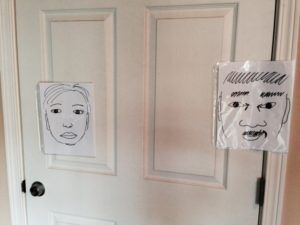“How many times a day should I practice my presentation?” my client asked me, after she and I had just spent nearly 2 hours on a Sunday afternoon rehearsing her presentation in a large meeting space at one of the big corporate campuses in the Twin Cities. Her presentation was the following Thursday. The CEO of the company was going to be there. This was a big deal.
“As much as you need to, but not too much,” I said. “Not more than twice a day.”
For some other people, I might have said, “at least twice a day.” But, she was a tightly wound, nose-to-the-grindstone high achiever. She could have given her 7-minute presentation that day. She didn’t need to practice anymore (rehearse, yes; practice, no).
And, I also suggested HOW she practice and rehearse, because I’m a believer in what Vince Lombardi said about practice:
“Practice does not make perfect. Only perfect practice makes perfect.”
In my experience (my own, painful, experience plus what I have observed), not only do many speakers not practice enough, but they also practice in self-defeating ways.
Speakers don’t practice their speech enough largely due to procrastination. They just run out of time. Procrastination also explains why the conclusion of a speech is often its weakest part. People tend to write the conclusion last and, “Oops, I did it again! I ran out of time!”
How long should you practice? My rule of thumb is at least an hour for every 10 minutes of your speech, or at least 6 times all the way through without stopping. Of course this means you have already done “read-throughs” to get the flow right and that you have reduced your speech to keyword notes, so that at most you just glance at notes to keep on track.
For a longer presentation, say a 45 minute presentation, going through it 6 times from start to finish could be challenging. So, what I have done is practiced in sections: Introduction, Point 1, Point 2, Point 3, Conclusion. AND, this is CRITICAL: Always practice the transitions before and after each section. Practicing the transitions before and after a section will help it flow in your mind and off your tongue when you put it all together.
Before you practice, step away from your speech.
The hardest, most-self-defeating practice habit for most speakers: over-dependence on their written speech.
Don’t get me wrong, I’m a big believer in writing out your speeches to work out your thoughts, the logical flow, transitions, wording and catch phrases. But writing a speech isn’t the same as writing an essay. A speech is written for the ear, not the eye and should be more conversational.
Plan your speech structure. Write it out. Read it for flow. Sweat over it. Get it to where you basically like it. Reduce to keywords. Set your speech aside and resist the temptation to look at it. Practice from the keywords. Record yourself. Listen to the recording. Revise your speech. Then start your serious practice sessions.
Practice is usually a solo activity, but you will be performing in front of an audience. To increase your comfort with an audience, first practice in front of a fake audience, not in front of a mirror (much too distracting!). I used to place my daughter’s stuffed animals on the bed and speak to them, later, when my daughter moved out and took her stuffed animals with her, I simply drew crude faces on paper and taped them up so that I could practice making eye contact while speaking.
Another way to practice that I have found useful is to practice a speech while engaged in another activity, such as driving (don’t do this during rush hour traffic!). By practicing my speech with divided attention, I have added a level of difficulty to the speech, which I have found makes it easier for me to remember when I present to an audience.
In addition to practicing, you should rehearse.
In a rehearsal you stand up and run through your presentation exactly as if you were presenting it to an audience. In fact, if you can rehearse with a live audience in the presentation room and with any equipment you will be using that’s the best scenario. In a rehearsal, check out the sound equipment, run your presentation slides and have a backup plan in case of technical difficulties. Ideally you will video yourself—you will learn a lot! When I videoed my client, I didn’t have to point out how very serious she looked and sounded, she noticed it herself when we watched the video.
A great way to rehearse your presentation (or a portion of a longer presentation) is at a Toastmasters club. Not only will you get a live (and compassionate) audience in low-stakes rehearsal, but you also will get valuable feedback during the evaluation portion of the meeting!
Do you have suggestions for “perfect practice”?



Great tips. Practicing a bad speech does no help at all.